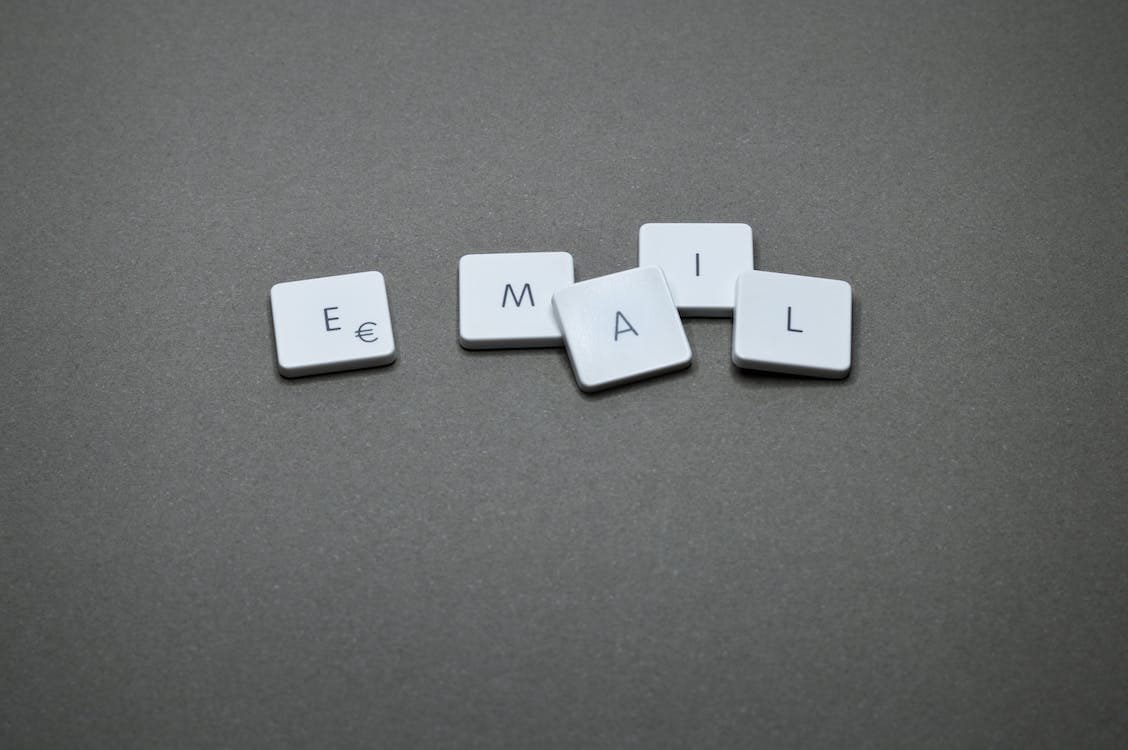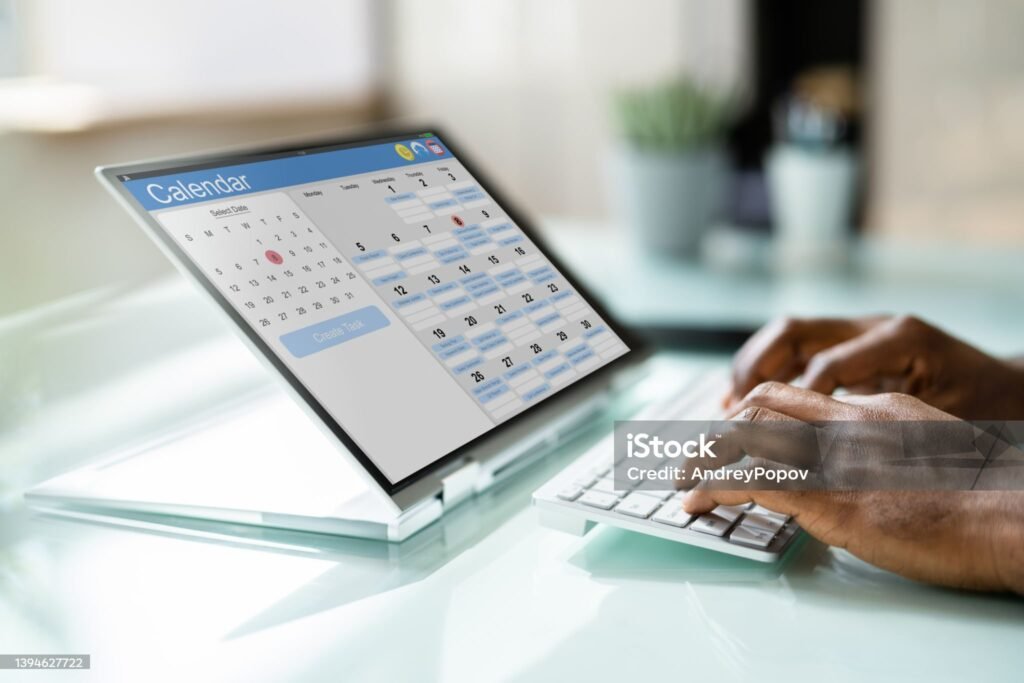In the fast-evolving digital marketing world, the right email marketing tool can be a game-changer for your business. As we navigate through 2024, Moosend and Keap emerge as prominent contenders in this space. But which one stands tall as the go-to email marketing tool for this year? Join me in a detailed exploration where we’ll compare these two platforms across various facets, from user-friendliness to advanced features, to determine which one truly deserves the title of the best email marketing tool for 2024.
| Moosend | Keap |
|---|---|
 |  |
| G2 Score – 4.6 out of 5 stars | G2 Score – 4.2 out of 5 stars |
| TrustRadius Score – 9.8 out of 10 | TrustRadius Score – 8.1 out of 10 |
User Experience: The First Touchpoint of Email Marketing
The user experience (UX) of an email marketing tool is critical, as it defines how smoothly you can navigate and use the platform. Let’s delve into how Moosend and Keap stack up in offering a seamless and efficient UX.
Moosend: Simplifying Email Marketing
Moosend is celebrated for its straightforward and intuitive UX. As soon as you log in, you’re greeted with a clean, uncluttered dashboard that is easy to navigate, making it ideal for beginners or those who prefer simplicity in their tools. This simplicity, however, doesn’t come at the cost of functionality.
The platform’s email builder is a highlight, offering a drag-and-drop interface that allows you to easily create visually appealing emails. Even if you’re not a design expert, Moosend makes it feel like you are, with its array of customizable templates and user-friendly design elements.
Beyond the email builder, Moosend simplifies list management and segmentation. Importing contacts, creating segments based on various criteria, and managing your lists are all straightforward processes. This ease of use extends to its automation features, where setting up automated email sequences is done through a clear, step-by-step process.
Keap: Blending Complexity with Capability
Keap, on the other hand, offers a more feature-rich environment. While this means a slightly steeper learning curve than Moosend, it rewards users with a robust set of tools. Keap’s interface is designed for those who need more than just email marketing, as it integrates CRM and advanced automation capabilities.
The platform’s email builder is powerful, offering a range of customization options for those who want more control over their email designs. It supports a variety of integrations, making it a versatile tool for businesses with complex marketing and CRM needs.
Keap’s list management and segmentation capabilities are also advanced, allowing for detailed targeting and personalization. However, this sophistication means that it might take longer to become proficient in using all the features effectively.
In terms of user experience, Moosend and Keap cater to different user bases. Moosend is ideal for those seeking an easy-to-use, efficient platform for straightforward email marketing. Its simplicity and intuitive design make it a great choice for small businesses or those just starting with email marketing. Keap, with its comprehensive suite of features, is more suited for businesses that require a combination of email marketing, CRM, and advanced automation in one platform. It’s a robust tool for those who are willing to invest the time to leverage its full potential.
Automation Capabilities: Crafting the Future of Email Marketing
Email automation is a cornerstone of modern email marketing, allowing businesses to send timely, personalized, and relevant emails to their audience. Both Moosend and Keap offer automation features, but they approach automation in different ways. Let’s explore their offerings to understand how they can streamline your email marketing efforts.
Moosend: User-Centric Automation for Efficient Campaigns
Moosend’s automation capabilities are designed with user convenience in mind. The platform offers an array of pre-built automation templates, which are incredibly beneficial for those looking to quickly set up common email sequences like welcome emails, anniversary messages, or cart abandonment emails.
The strength of Moosend’s automation lies in its ease of use and flexibility. Creating custom automation workflows is simple, with a user-friendly interface that guides you through setting up triggers based on subscriber actions, like clicking a link or opening an email. This allows for personalization and timeliness in your email campaigns.
Moreover, Moosend’s segmentation capabilities enhance its automation features, enabling you to tailor your automated emails based on detailed subscriber criteria. This level of customization ensures that your automated messages are relevant and engaging, increasing their effectiveness.
Keap: Advanced Automation for Comprehensive Marketing Strategies
Keap takes automation to a more advanced level, particularly focusing on integrating email marketing with overall customer relationship management. Its automation features are more comprehensive and are an ideal fit for businesses looking for a holistic marketing approach.
The platform provides a visual automation builder, allowing you to create complex automation sequences that can include conditional branching, time delays, and action triggers based on detailed customer interactions. This capability is particularly valuable for businesses that want to create intricate, multi-step marketing funnels.
Keap’s automation extends beyond email, integrating with its CRM functionalities. This means you can automate not just email sequences but also sales pipelines, customer follow-ups, and other CRM-related activities, providing a seamless workflow across your marketing and sales efforts.
In the realm of automation, Moosend and Keap cater to different needs. Moosend is ideal for businesses seeking straightforward, effective automation capabilities with an emphasis on ease of use. Its user-friendly approach makes it suitable for those who want to quickly implement automated email campaigns without needing extensive technical knowledge. Keap, on the other hand, offers more sophisticated automation tools, integrated with powerful CRM features. It’s suited for businesses that require complex, multi-stage marketing automations and are looking for a comprehensive tool that bridges email marketing and customer relationship management.
Analytics and Reporting: The Lens to Your Campaign’s Performance
Analytics and reporting capabilities are pivotal in email marketing, offering insights into campaign performance and driving data-driven decisions. Let’s dive into how Moosend and Keap equip you with the data and insights to optimize your email marketing strategies.
Moosend: Straightforward and Actionable Insights
Moosend’s analytics are designed to be both comprehensive and accessible. The platform provides all the essential metrics such as open rates, click-through rates, and bounce rates, but it also goes a step further. You can track subscriber activity in real-time, giving you immediate feedback on how your campaigns are performing.
The platform excels in presenting data in an intuitive, easy-to-understand manner. This user-friendly approach to analytics is particularly beneficial for those who need to quickly interpret data and apply insights without getting bogged down in complex statistical analysis.
Additionally, Moosend offers A/B testing capabilities, allowing you to test different aspects of your emails, from subject lines to content. This feature is invaluable for refining your strategies and improving the effectiveness of your campaigns based on solid data.
Keap: In-Depth Reporting for a Holistic View
Keap approaches analytics with a focus on providing a holistic view of your marketing and sales efforts. The platform offers detailed reporting features that go beyond email metrics to include sales data, customer interactions, and more. This integration of email marketing analytics with CRM data is a significant advantage for businesses looking to understand the broader impact of their email campaigns.
Keap’s analytics also allow for more in-depth segmentation and reporting. You can drill down into specific subscriber segments or campaign types, giving you detailed insights into different aspects of your marketing strategy. This level of detail is crucial for businesses with complex sales processes or multiple marketing channels.
In terms of analytics and reporting, Moosend and Keap offer distinct advantages. Moosend is ideal for those seeking straightforward, immediate insights into their email campaigns, with an emphasis on ease of use and actionable data. Its user-friendly analytics are suited for businesses that want to quickly adapt their strategies based on performance metrics. Keap, in contrast, provides more comprehensive, in-depth analytics, integrating email marketing data with CRM insights. It’s well-suited for businesses that need a detailed understanding of their marketing and sales funnel and who wish to leverage advanced reporting to inform their strategies.

Related: Check out our free SEO suite

Integration Capabilities: Enhancing Your Marketing Ecosystem
In today’s digital marketing world, the ability of an email marketing tool to seamlessly integrate with other applications and services is vital. These integrations can expand the capabilities of your email marketing efforts, ensuring a more cohesive and efficient marketing strategy. Let’s compare the integration capabilities of Moosend and Keap.
Moosend: Versatile Integrations for a Unified Marketing Approach
Moosend offers a wide range of integrations with various third-party tools and services, accommodating a broad spectrum of marketing needs. Its integrations cover popular CRM systems, e-commerce platforms, lead generation tools, and more, making it a versatile choice for businesses utilizing a diverse set of tools in their marketing stack.
Setting up integrations in Moosend is typically straightforward, allowing for seamless synchronization of data and processes. Whether you need to import contacts from a CRM, connect to e-commerce platforms for tailored campaigns, or integrate with analytics tools, Moosend provides the necessary flexibility.
Additionally, Moosend’s API allows for custom integrations, offering an extra layer of adaptability for businesses with specific needs or those utilizing custom-built systems.
Keap: Deep Integration for CRM and Sales Automation
Keap shines in its integration capabilities, especially in terms of CRM and sales processes. The platform is designed to integrate deeply with a variety of tools, enhancing its powerful CRM and automation features.
Keap’s integrations facilitate a seamless flow of data between your email marketing campaigns and customer relationship management activities. This means your sales and marketing efforts can be closely aligned, providing a more cohesive customer journey.
The platform also offers integrations with e-commerce platforms, payment processing services, and various other marketing tools. These integrations are particularly beneficial for businesses looking for a comprehensive solution that covers not just email marketing but also sales automation and customer management. In the arena of integration capabilities, both Moosend and Keap offer strong solutions, but with different focal points. Moosend provides a wide range of integrations that make it a flexible choice for businesses using a variety of marketing tools. Its easy setup and versatile API support cater to a diverse set of integration needs, making it ideal for businesses looking to create a unified marketing ecosystem.
Keap, on the other hand, excels in its deep integrations with CRM and sales tools. It is particularly suited for businesses that require tight integration between their email marketing efforts and their overall customer relationship and sales processes. The level of integration Keap offers ensures a seamless workflow, making it a powerful tool for businesses focused on comprehensive customer management and sales automation.
Both platforms present strong cases, but your choice between Moosend and Keap for integration capabilities will depend on the nature of your business and the specific integration needs you have. If you prioritize a wide range of easy-to-set-up integrations, Moosend might be the better choice. However, if your focus is on integrating email marketing with CRM and sales processes, Keap could be the more suitable option.
Customer Support and Educational Resources: Navigating with Confidence
In the complex world of email marketing, having access to robust customer support and a wealth of educational resources is invaluable. These aspects not only assist in troubleshooting but also enhance your ability to use the platform to its full potential. Let’s examine how Moosend and Keap fare in providing support and learning resources to their users.
Moosend: Responsive Support and Comprehensive Learning Tools
Moosend is recognized for its accessible and responsive customer support. Users can reach out for assistance through various channels, including email, live chat, and phone support. This multi-channel approach ensures that help is readily available, catering to different user preferences.
In addition to its solid support structure, Moosend offers an extensive array of educational resources. These include a detailed knowledge base, regularly updated blogs, webinars, and video tutorials. The content spans a broad range of topics, from basic email marketing principles to advanced strategies, making it suitable for beginners and experienced marketers alike.
Furthermore, Moosend facilitates community learning through forums and social media groups, where users can share experiences, tips, and best practices. This community aspect fosters a collaborative learning environment, enhancing the overall user experience.
Keap: Targeted Support and In-Depth Educational Content
Keap places a strong emphasis on providing targeted support, especially tailored to businesses that utilize its CRM and advanced automation features. The platform offers various support channels, including email and phone support, with a focus on delivering in-depth, issue-specific assistance.
Alongside its customer support, Keap provides a wealth of educational resources. This includes comprehensive guides, video tutorials, and a resource-rich blog. The content is particularly focused on leveraging Keap’s advanced features, offering valuable insights and strategies for CRM integration and automation.
Keap also offers training sessions and webinars, often featuring industry experts. These sessions are invaluable for users looking to deepen their understanding of complex marketing strategies and make the most out of Keap’s extensive functionalities.
When it comes to customer support and educational resources, both Moosend and Keap excel in their offerings. Moosend is well-suited for those who value a variety of accessible support options and a wide range of learning materials that cater to all levels of expertise. Keap, meanwhile, is ideal for businesses looking for more specialized support, particularly in areas related to CRM and advanced automation. Its educational content is tailored to help users maximize the capabilities of its comprehensive platform. Your choice between Moosend and Keap in this aspect will depend on your specific support needs and the type of educational content that aligns with your business goals and platform usage.
Pricing Structures: Evaluating Cost-Effectiveness
In the world of email marketing tools, pricing is a crucial factor that can influence your choice. It’s important to balance the cost against the features and benefits each platform offers. Let’s assess the pricing structures of Moosend and Keap to understand which provides better value for your investment.
| Moosend | Free Plan: Offers access to basic features for up to 1,000 subscribers, including email campaigns, automation, and landing pages. Pro Plan: Pricing starts at $8 per month for up to 2,000 subscribers, with unlimited emails. Includes advanced features like transactional emails, landing page builder, and phone support. The price scales with the number of subscribers. Enterprise Plan: Custom pricing for businesses needing custom features like account management, SSO (Single Sign-On), and more. |
| Keap | Keap Grow: Starting at approximately $79/month, offering basic CRM, email marketing, and automation capabilities. Keap Pro: Starting at around $149/month, this plan includes more advanced CRM features, automation, and ecommerce functionalities. Infusionsoft: Starting from $199/month, offering a comprehensive set of features for advanced business needs, including sales pipeline, advanced reporting, and ecommerce tools. |
Moosend: Affordable and Transparent Pricing
Moosend is known for its affordable and transparent pricing structure, making it an attractive option for small to medium-sized businesses and startups. The platform offers a free plan, which is beneficial for those just starting out or with smaller email lists. This free plan includes access to most of Moosend’s core features but with limitations on the number of subscribers and email sends.
As you scale, Moosend’s paid plans are designed to grow with your business. These plans are based on the number of subscribers and offer unlimited email sends, a feature that can be particularly advantageous. The more advanced plans also include additional features like landing pages, transactional emails, and priority support.
The simplicity and clarity of Moosend’s pricing model make it easy for businesses to choose a plan that best fits their needs and budget, without worrying about hidden costs or complicated tier structures.
Keap: Premium Pricing for Advanced Features
Keap’s pricing model is tailored towards businesses seeking advanced features, particularly in the realms of CRM and automation. The platform does not offer a free plan, which might be a consideration for smaller businesses or those with tight budgets. However, its paid plans include a comprehensive suite of advanced features, like sales pipeline management, detailed automation, and CRM integration.
The pricing is based on the number of contacts and the level of features you need. While Keap’s plans tend to be higher priced than Moosend’s, the investment can be justified by the advanced capabilities and comprehensive solutions it offers, especially for businesses that require a robust CRM integrated with their email marketing.
When considering pricing and value, Moosend and Keap cater to different segments of the market. Moosend offers an affordable solution with a clear pricing structure, making it an excellent choice for businesses looking for a cost-effective email marketing tool with all the essential features. Keap, meanwhile, presents a more premium option, offering advanced functionalities suitable for businesses that need a comprehensive solution combining email marketing, automation, and CRM. Its higher price point reflects the depth and breadth of features it provides. Ultimately, the choice between Moosend and Keap in terms of pricing will depend on your business size, budget, and the specific functionalities you need from your email marketing tool.
Conclusion
As we’ve navigated through the detailed comparison of Moosend and Keap, it’s evident that both platforms offer unique strengths, tailored to different business needs and preferences in the email marketing landscape of 2024. Moosend stands out with its user-friendly interface, making it an excellent choice for those new to email marketing or who prioritize ease of use. Its affordable pricing structure, coupled with a robust set of essential features like automation, analytics, and a variety of integrations, makes Moosend a highly appealing option for small to medium-sized businesses seeking efficiency and value.
On the other hand, Keap caters to businesses looking for a more comprehensive solution that extends beyond email marketing. Its integration of advanced CRM features, sophisticated automation, and extensive customer support and educational resources make it ideal for businesses requiring a more holistic approach to customer relationship management and marketing automation.
Ultimately, the decision between Moosend and Keap hinges on your specific business requirements, budget constraints, and the level of complexity you need in your marketing tools. Moosend is the go-to for straightforward, cost-effective email marketing, while Keap is the choice for businesses seeking in-depth CRM integration and advanced functionalities. In the dynamic world of digital marketing, both Moosend and Keap stand as capable allies, ready to empower your email marketing efforts in 2024.
Read Next:
- The Role of Visuals in Email Marketing: Enhancing Engagement with Images and GIFs
- Email Marketing for Subscription-Based Services
- Crafting Compelling Email Subject Lines: Tips and Tricks for Higher Open Rates
- The Importance of Deliverability in Email Marketing: Ensuring Your Messages Reach the Inbox
- Email Marketing for Events and Webinars: Boosting Attendance and Engagement






















Comments are closed.